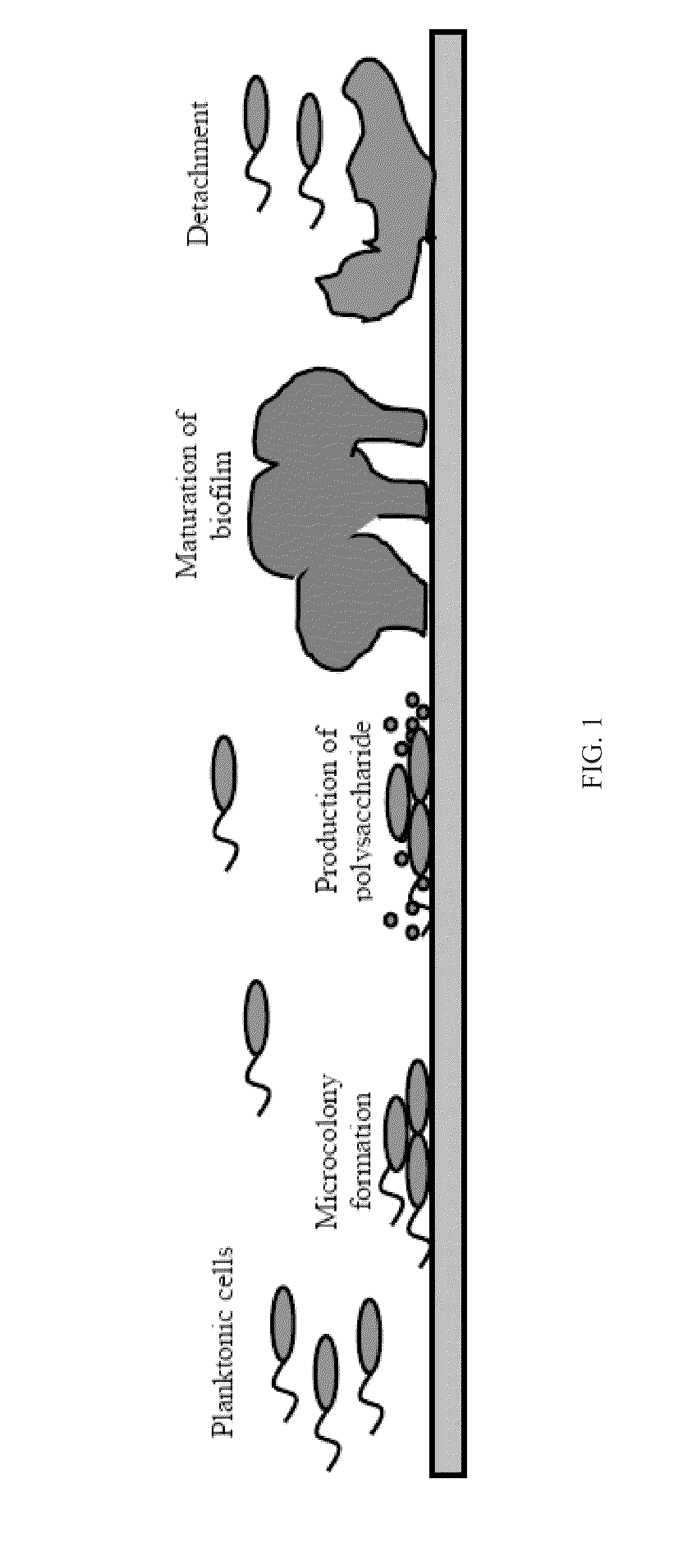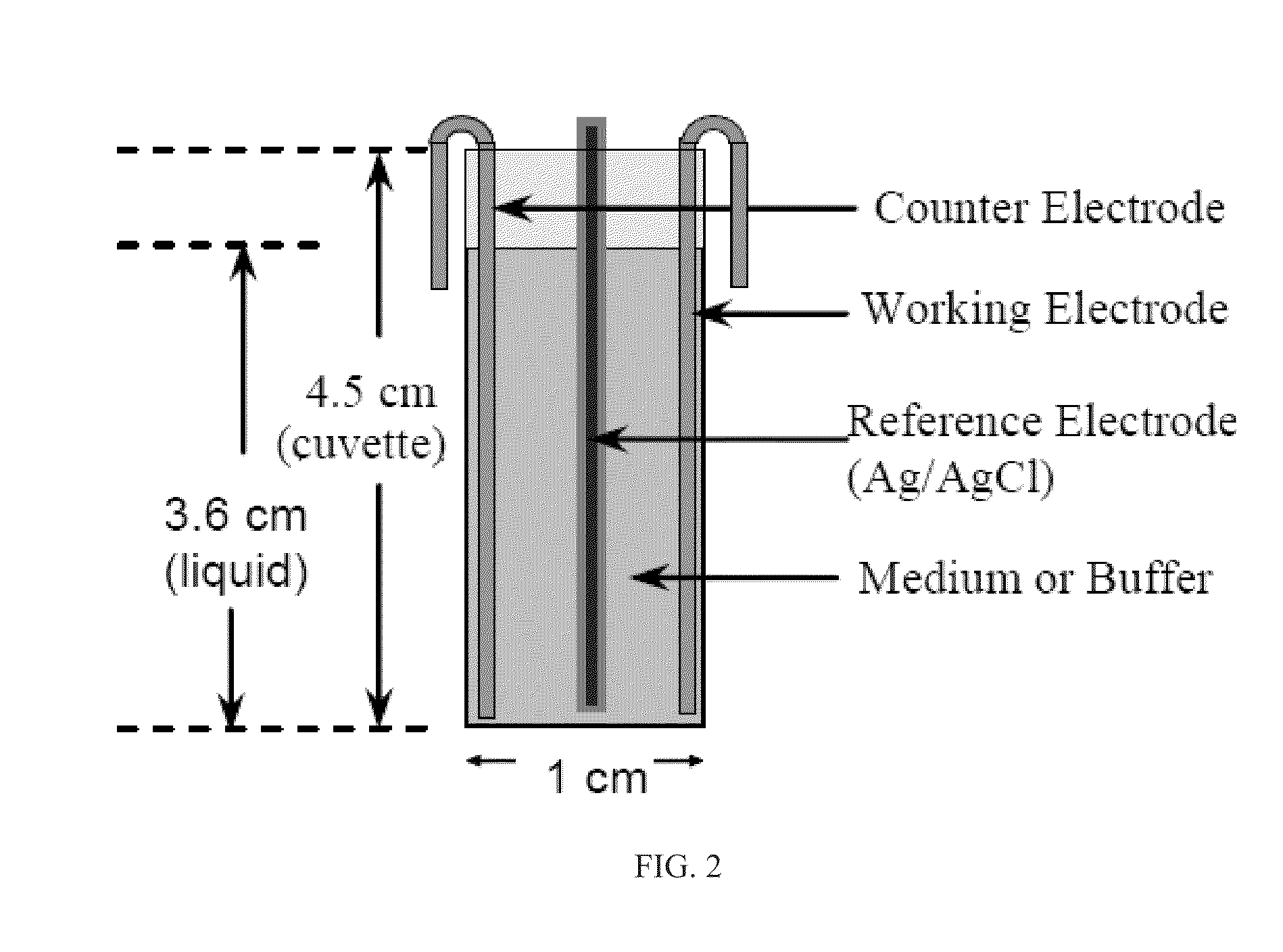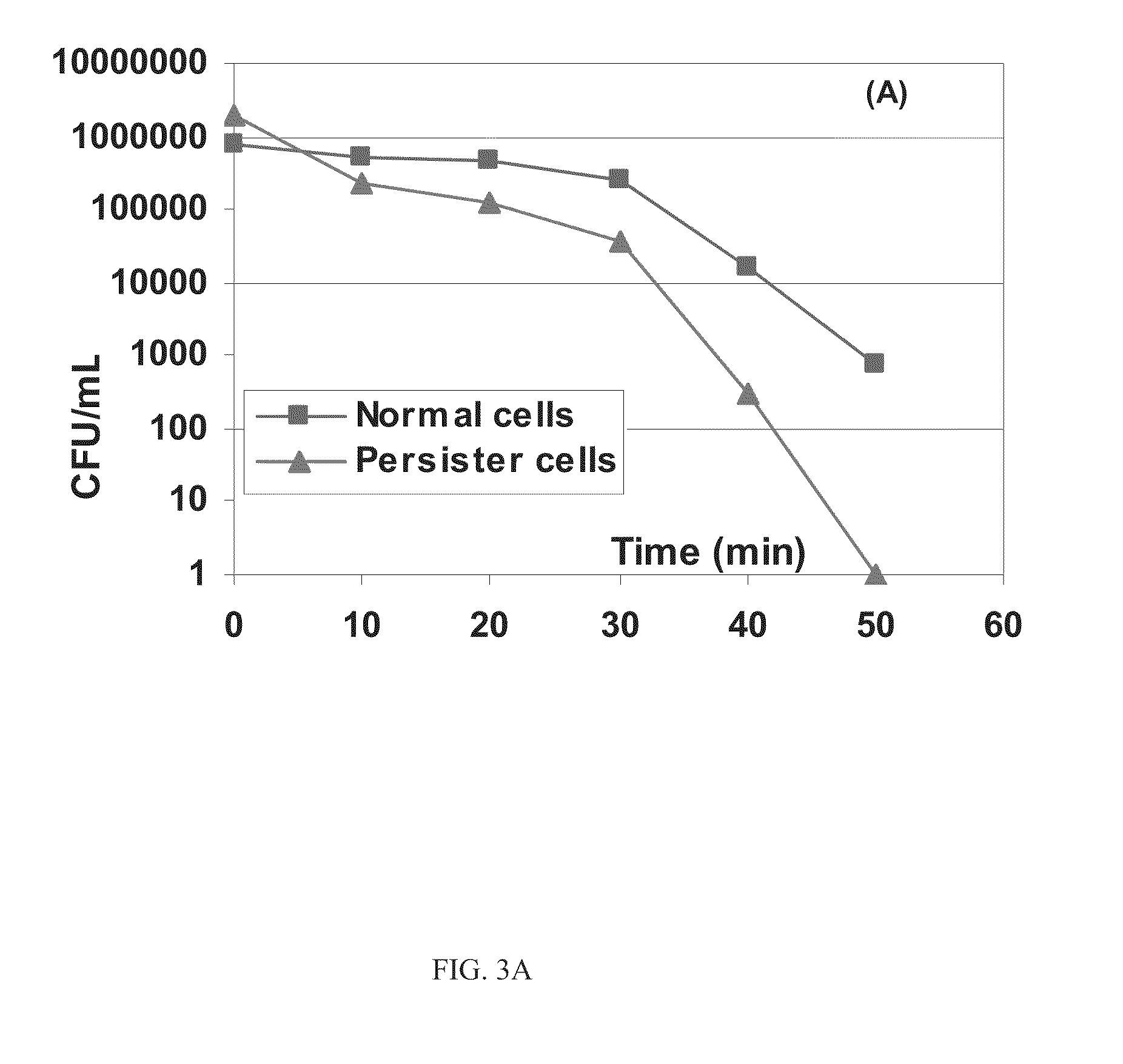System And Method For Controlling Bacterial Persister Cells With Weak Electric Currents
a technology of persister cells and electric currents, applied in the direction of liquid separation by electricity, material analysis, organic active ingredients, etc., can solve the problems of reducing the number of bacteria in the subpopulation, only repressing but not eliminating the subpopulation of bacteria, and partially explaining the
- Summary
- Abstract
- Description
- Claims
- Application Information
AI Technical Summary
Benefits of technology
Problems solved by technology
Method used
Image
Examples
Embodiment Construction
[0034]Referring now to the drawings, wherein like reference numerals refer to like parts throughout, the present invention provide a system and method for the elimination of persister cells by electric currents and synergy with antibiotics. The present invention was tested using an electrochemical cell seen in FIG. 2 and with the use of E. coli HM22 constructed by the pioneer work of Moyed and Bertrand because it produces 1000 times more persister cells in exponential-phase cultures than the wild-type E. coli strains and has been used in most studies of persister cells. To evaluate the effects of electric currents, the persister cells were first isolated as described previously. Briefly, the exponential culture of HM22 at optical density at 600 nm (OD600) of 0.3 in LB medium was treated with 100 μg / mL ampicillin for 3 h to kill and lyse the normal cells. The persister cells were then collected by centrifugation at 8000 rpm at 4° C. for 10 min and resuspended in 0.85% NaCl buffer. Th...
PUM
| Property | Measurement | Unit |
|---|---|---|
| optical density | aaaaa | aaaaa |
| volume | aaaaa | aaaaa |
| voltage | aaaaa | aaaaa |
Abstract
Description
Claims
Application Information
 Login to View More
Login to View More - R&D
- Intellectual Property
- Life Sciences
- Materials
- Tech Scout
- Unparalleled Data Quality
- Higher Quality Content
- 60% Fewer Hallucinations
Browse by: Latest US Patents, China's latest patents, Technical Efficacy Thesaurus, Application Domain, Technology Topic, Popular Technical Reports.
© 2025 PatSnap. All rights reserved.Legal|Privacy policy|Modern Slavery Act Transparency Statement|Sitemap|About US| Contact US: help@patsnap.com



